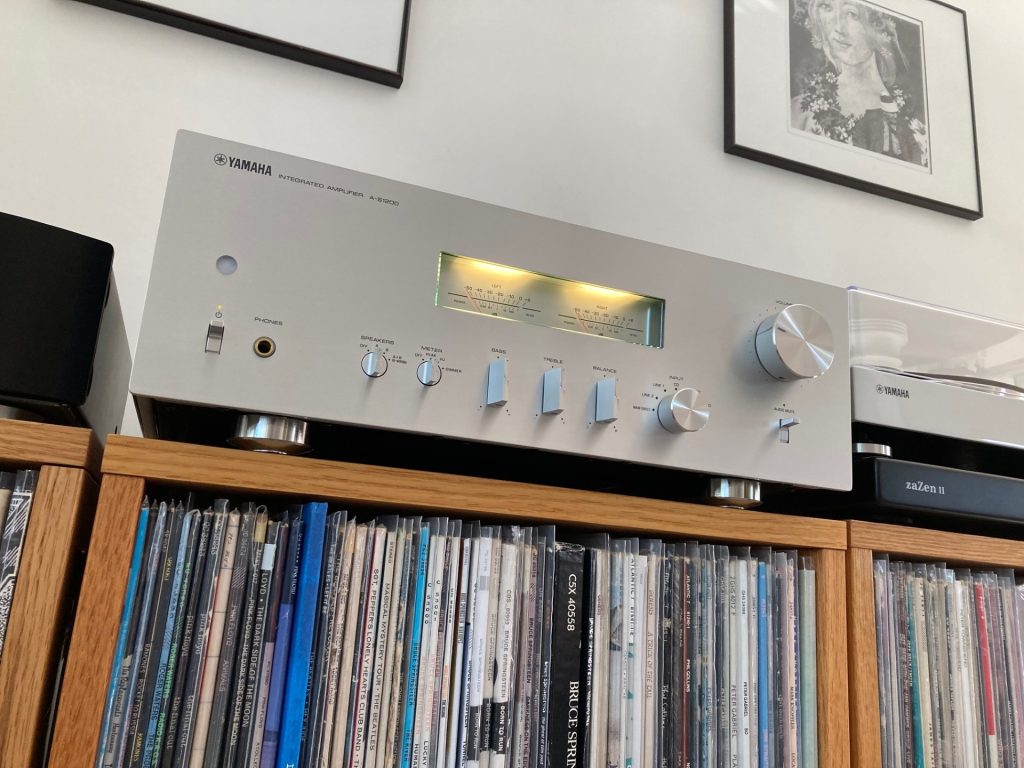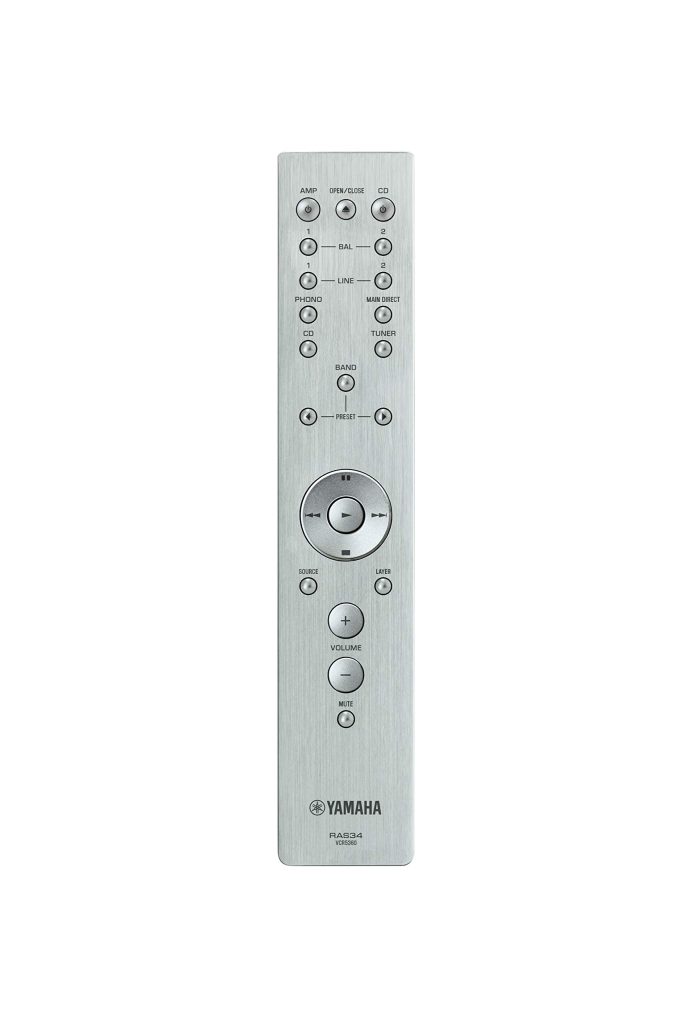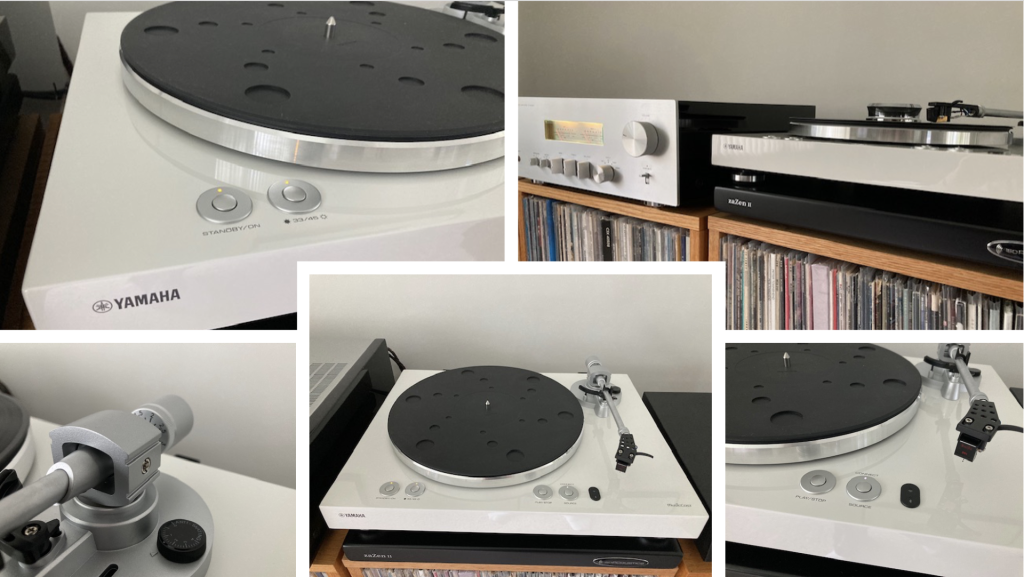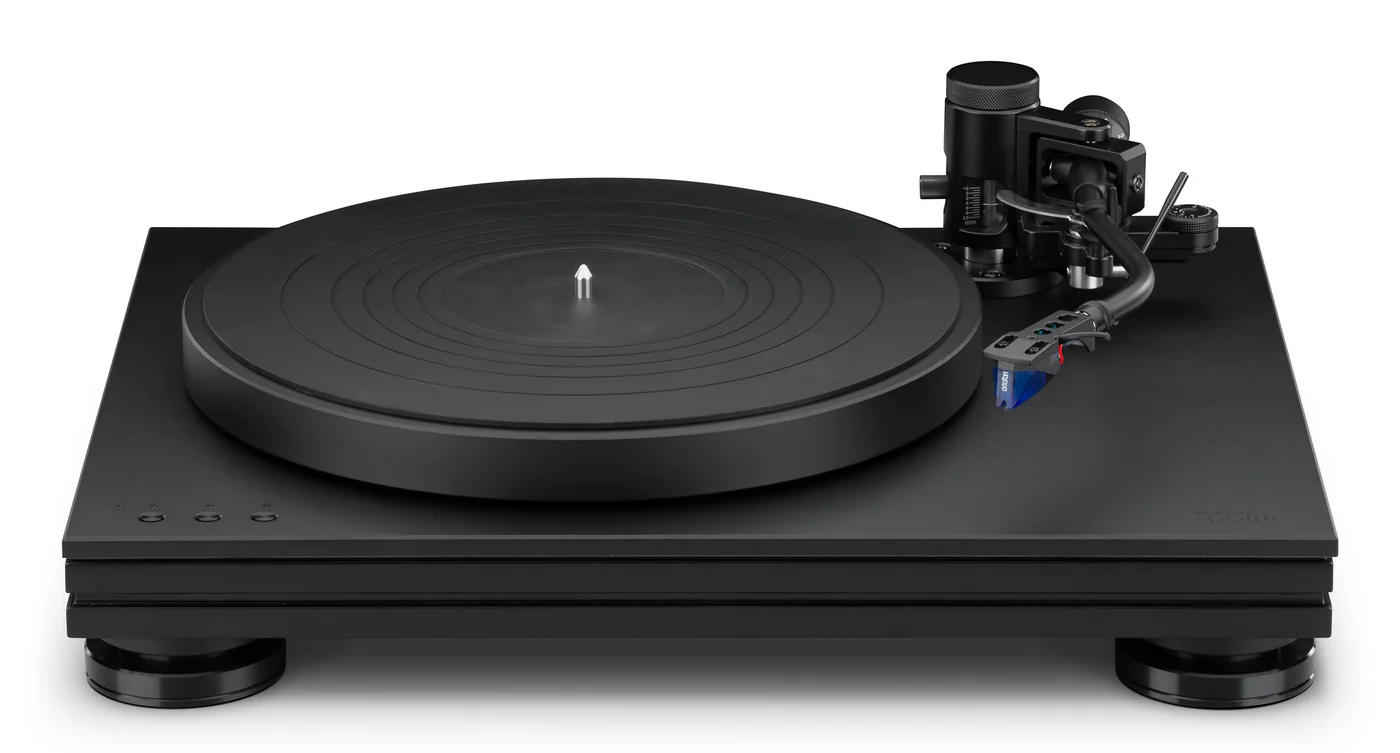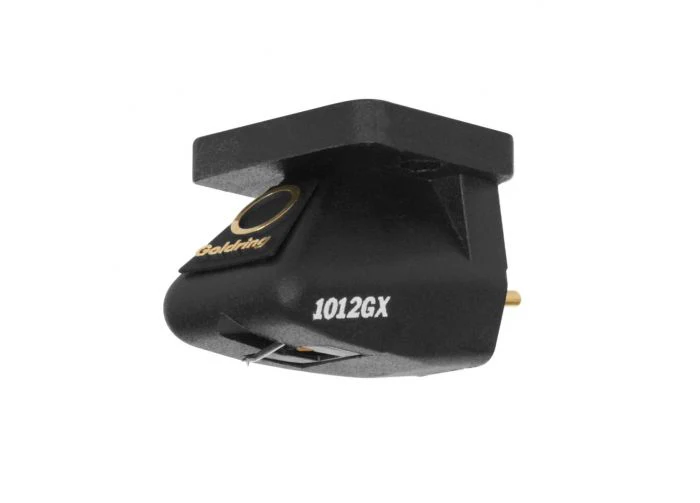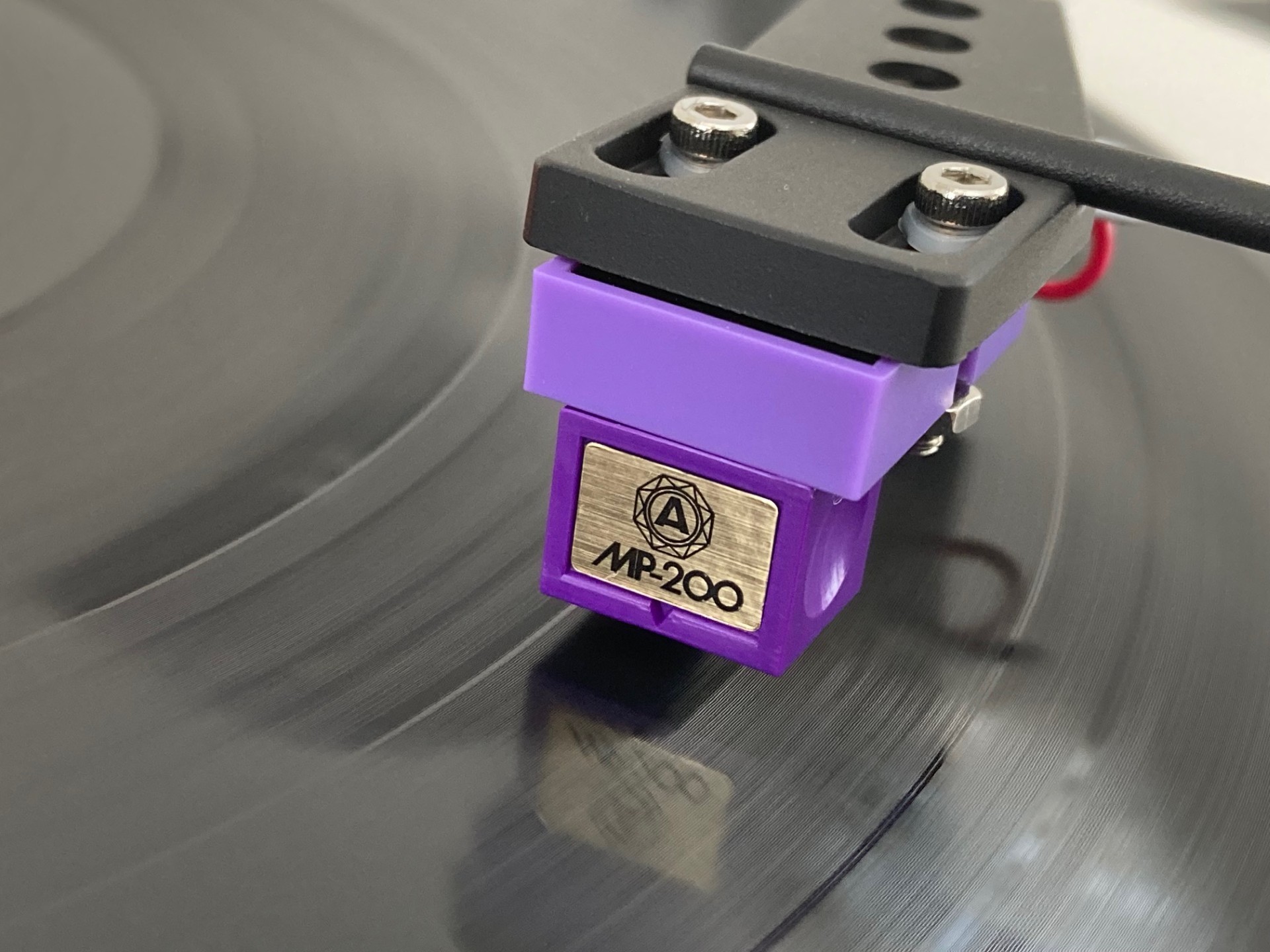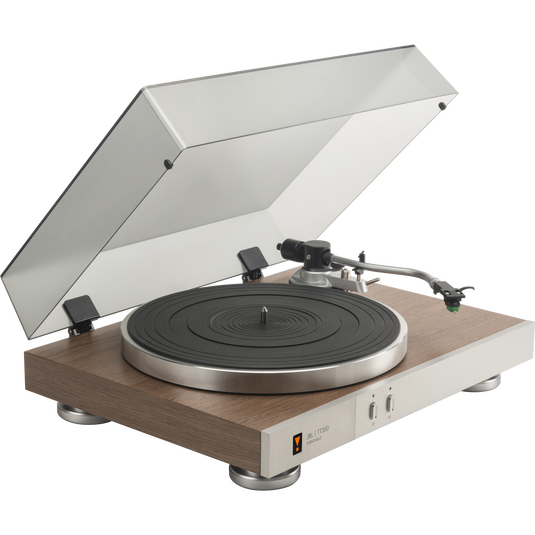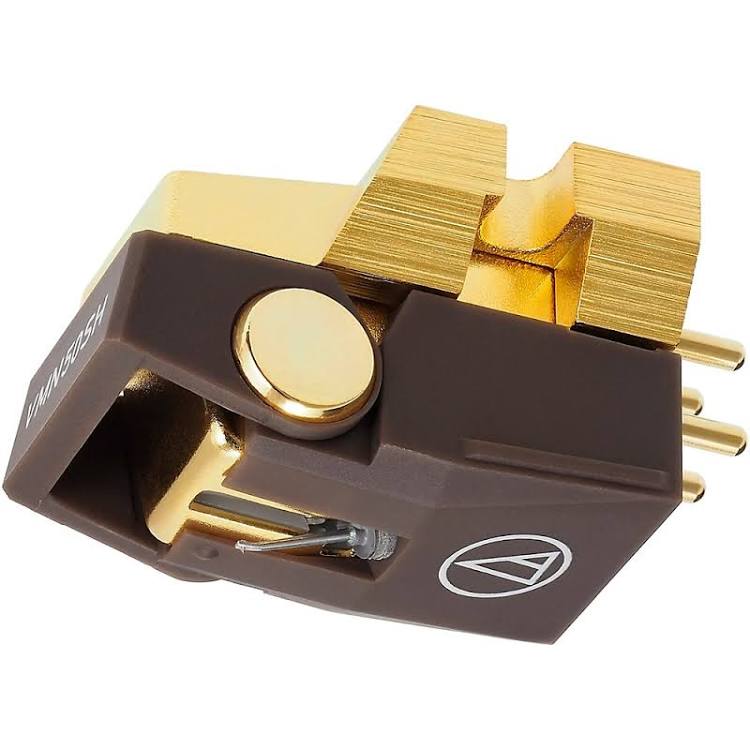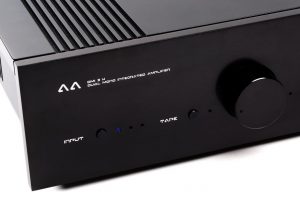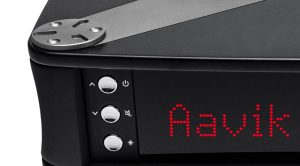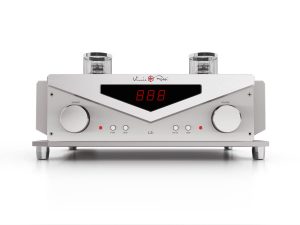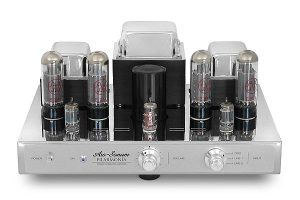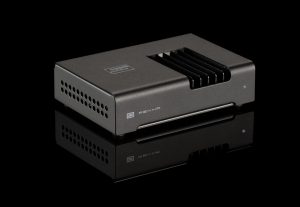"I've got a big one for ya." So said the UPS guy the day this bruiser of an integrated amp showed up. Not too long ago, it would've been considered "full-featured," and heaven knows it's certainly full-figured. Pictures don't quite do it justice. For anyone used to Naim or Rega or Arcam or the like, the Yamaha will be an imposing sight. And it's no empty jewel box; this thing is stuffed with neatly arranged premium parts including a transformer the size of a softball that weighs more like balls of the bowling variety.
Yet Yamaha's A-S1200 is also a throwback to the days before onboard DACs and streaming capability, let alone HDMI inputs. That's a good thing. I understand the aesthetic advantages of having everything for music playback neatly contained in one tidy and sleek-looking box that disappears in someone's living room or den, but I don't like the idea of an obsolescence clock ticking away from the moment I unpack something costing $2,995. What the Yamaha does have is a headphone amp and a discrete MM/MC phono section. That's it. Perfect. Those will still be fully valid 25 years from now, even if I'm not.
The Yamaha is also a wonderful thing in terms of appearance, quality and sound. Yep, it whisks you right back to the 1970s when premium Japanese HiFi was sold by the pound, even at your local JCPenney, and built to last, which, of course, it did. The modern Yamaha's brushed aluminum fascia and chunky piano black wooden side panels give off hints of, well, a Yamaha grand piano. The feet are chrome plated iron. Yet this thing is also precise and delicate, in ways I don't recall from my youth. Versatile, too, at least in the sense that the features it does pack eliminate the necessity for at least two extra boxes and accompanying interconnects; the power it outputs should be more than sufficient for a couple of decade's worth of speaker upgrades; and the healthy number of analog inputs make connecting whatever the future holds possible, provided those connections are still wired. But really, even that doesn't matter because somebody will probably invent adapters for them, just like they did for HDMI to RCA.
But, man, this thing is big. I don't own a traditional equipment rack anymore, choosing instead to perch components atop my decades old and fully loaded Per Madsen LP racks for space savings. The Yamaha sticks out visually against my other components like a stout but debonair hand model's perfectly manicured sore thumb, and it also manspreads authoritatively off the rear of the shelf by several inches. That, I suppose, is the price one pays for a component that doesn't hold back on engineering. Getting it in place was a minor workout, though. You could easily lose a foot if you drop this thing, or at least a toe. In fairness though, it does fit, with room to spare on the sides, and all four feet even manage to make solid contact with the shelf. Big, yes, but hardly unmanageable.
Powering it up triggers a cascade of precisely clicking relays as the Yamaha fully awakens. Hi there! Soft lights on the meters are gently set aglow and all's right with the whole darn world. Global warming? Inflation? Sriracha shortage? Karens everywhere? Cue up some music and let it burn; it'll still be a mess when Igor Levit is done playing for the night. The A-S1200 is a time machine in the grandest sense. Just having it in the room is the right kind of company for a lazy summer night or a snowy winter evening. This, friends, is deluxe living.
All kidding aside, at the end of the day, the A-S1200 is just an integrated amp, meaning it has every right to occupy some space since it saves a lot too compared with most similarly brawny preamp and amp separates. Practically speaking, it could sit comfortably below a common 70-inch TV on one of today's wide-ass media consoles and seem diminutive by comparison. All you really need is something to stream with (like a turntable; more on that later), and how much bulk does that one extra box really add to the whole shebang? Stash it out of sight and forget it. I connected my Marantz network player, a newer Technics turntable plus a vintage Acoustic Research tuner, which amounted to four rack spaces in my living room, but a modern TV stand could house at least two of those behind closed doors, lessening the visual clutter.
For someone used to warming up tubes for the last 15 or so years, it was a treat to start listening nearly instantly. Even nicer was using an amplifier that doesn't also double as a space heater in our increasingly toasty summers. (Doesn't it seem just a little wasteful to crank up the A/C in order to also crank up the volume?) Oh, and what's this? A remote control? Haven't held one of those for an integrated since MTV still showed music videos. Let's start there.
The remote is fine looking from a distance and ergonomically sensible, but largely made of comparatively cheap and lightweight plastic. It has no place being sold with this amp. Now, you may say, isn't a remote milled from a solid block of aluminum just as wasteful as abusing air conditioning to accommodate a tube amp on hot days? I'd say no. Remotes get tossed around, dropped, accidentally sat upon and otherwise put through the ringer. They lead hardscrabble, thankless lives. That's why so many used equipment ads read "no remote included." For $3000, the remote should last at least as long as the amp it controls and this one just ain't gonna make it.
Next up: the phono section, which switches between moving magnet and low-output moving coil cartridge capability at the flick of a rear panel slide switch. It's conspicuously good: quiet, detailed, accurate, sharp, tight, and punchy… if you happen to have a cartridge that it's compatible with. While the MM specs are fairly standard, input capacitance is strangely omitted from the manual. Judging how it behaved with Audio-Technica cartridges like the AT-VM750SH that like 100-200 pf, I'd bet the input capacitance value is above something more common like 100 pf. It worked a little better with an Ortofon 2M Bronze, which likes to see 150-300 pf and sounded slightly better balanced on top than the AT.
After a brief series of auditions, it further became clear that the MM preamp leans toward Type A, meaning more exotic styli could sound a bit lean. So I swapped in the plain-Jane bonded elliptical stylus from an Audio-Technica AT-100E for the 750SH and voila, a richer, rounder, fuller sound emerged. Then I swapped in a $189 Goldring E3, also a bonded elliptical, and while the sound was more analytical it still retained much of the AT's richness and added more paciness. Finally, along came a $450 Nagaoka MP-200 with a nude-mounted but ordinary elliptical stylus on a boron cantilever and there was our winner, fuller-bodied, warm in the sense that presence was more human-sounding, but quick and informative. That felt like where the point of diminishing returns kicked in.
Up to that point, the Yamaha resolved at least as well as a $349 Cambridge Audio Alva Duo phono preamp, but unsurprisingly, not in the same ballpark as my $2295 Avid Pulsus, particularly in terms of soundstaging and air. Actually, it kind of split the spiritual difference between the two, imbuing music with enough listenability, but not quite the Cambridge's effervescence, while tenaciously plucking out nice bits of low-level information like the Avid. It's still more of a resolver than a reproducer of atmosphere but the soundstage is pretty spacious and not at all closed-in.
Then things got weird. MC mode is genuinely problematic because it fixes the impedance at 50 ohms and that ain't adjustable. I can't think of a single cartridge I've ever owned that would work optimally with it. As expected, the ones I tried (which recommend "at least" 100 ohms according to the manufacturers) sounded thick, dull, rolled off, and even slightly muffled. The Ortofon Rondo Red, one of my absolute favorites from the past, sounded like the Nagaoka with the treble turned down. Why Yamaha made this choice is incomprehensible to me, as they render the MC circuitry somewhere between virtually useless and less than ideally matched with many popular cartridges under $1000. Why bother when they could have perhaps lavished more cost and attention on MM performance instead? And, sure, you can use an outboard phono unit but again, that adds complexity and boxes and wires, and what the hell did you buy an integrated amp for in the first place?
Okay, so stick with warmer, fuller moving magnets (or moving irons) instead and perhaps steer clear of overly exotic styli. I did. If you like your music more on the warm and romantic side, choose your table and cartridge accordingly. Now, to be clear, the Yamaha's basic character wasn't in need of taming in terms of high frequencies, but it was relatively unflinching, not super generous in the low bass department, and definitely not in the business of glossing over harsh recordings. That said, at its best, the Yamaha phono section was lovely, and you'd need to spend $300 to $500 on an outboard model that equals its turntable performance, loading and capacitance concerns aside.
But wait. Yamaha sells some turntables now, too. Their $8000 GT-5000, with optional $900(!) dust cover, doesn't feel like a price appropriate pairing, but neither do their $499 TT-S303 and $699 TT-N503, which are identical save for the 503's clever ability to double as a streaming device using Yamaha's MusicCast app. Still, wanting to give at least one a shot, I picked the glossy, MDF-constructed 503 and took it for a spin. One hitch: there are two sets of RCA outputs, one taking the signal from both the streamer and built-in phono preamp, and the other strictly from the tonearm. If you want to use your own preamp, and also stream, you'll need to switch between them. Other reviews have already covered the Bluetooth and WiFi features, so I'll skip them and focus on everything they didn't. With the stock $20 cartridge and predictably passable built in phono preamp, the TT-N503 did analog in the hipster sense: warm, laconic, crackly background music for parties, but not serious listening, though a little crispness saves it from being dull. Using the integrated amp's phono stage instead with an upgraded cartridge (Shelter's 201, for one, added richness, plump bass, and vibrant vocal presence), things improved really significantly. It can't be overstated how much the 503's ringy, lightweight platter was helped by swapping the included felt mat for a thick, heavy Oyaide BR-12 tungsten/rubber model, topped with a weight for better coupling. Perching the turntable on an Isoacoustics platform no doubt had an effect too.
So tweaked, the turntable now delivered much more than the basic goods, still in a midrange-centric manner, but with surprising soundstage width, commendably low surface noise, more than sufficient detail, strong dynamics, and confident speed stability (despite middling published wow and flutter specs). Some people might even prefer this setup's smooth, meaty, flowing character to the usual budget audiophile suspects. Aside from slightly loose tonearm bearings that are becoming all too common these days, the TT-N503 looked sleek and worked very well. Controls had a positive though not upscale feel, and it was nice having separate speed selection and start/stop buttons on an entry-level belt drive unit. Yes, Music Hall's $649 Classic is better right out of the box as a pure record playing machine in this price range, but if your heart is set on a turntable that matches aesthetically with the A-S1200, and the addition of streaming is important, the Yamaha is recommendable and quite nice to listen to if you're willing to throw some upgrades at it. Most people won't, as with most budget tables, but don't let that stop you.
Admittedly, I tested the headphone amp rather briefly because it's summer as I write this, and strapping on full-size headphones in August is a little like wearing a parka to a bonfire. I can't promise I'd love the combination of the Yamaha amp with very revealing cans like the Sennheiser HD800 unless that kind of thing is your bag, but it did well driving the fun, rich, forgiving Philips Fidelio X2HR model. Certainly it's up to the task of replacing a modest to very good standalone headphone amp, and the sound is consistent with the speaker outputs, meaning if you like one you'll be happy with the other. I spent one unusually chilly evening listening to George Graham host "Mixed Bag," an eclectic music showcase on WVIA-FM, and it took me back to my early years of retreating into headphone listening as a temporary tonic for teen angst.
With all music, and any source, the overriding impression is one of confidence and control. This amp is no brute though, precisely placing instruments and maintaining their individuality even during complex passages. I found it both attention-grabbing and generally non-fatiguing, even with my perpetually ready-to-rock JBL L100 Classic speakers, and that's a neat trick. Paired with a set of Harbeth or Spendor speakers? Boy, that would be interesting for folks who want lots of information tempered by a bit more politeness, quiet confidence and midrange warmth.
That midrange in particular was both prominent and a little lean at the same time, though I don't want to overstate this point. Perhaps a better way to describe it is to say it's lacking bloom compared with more generously voiced products, especially on vocals, but presence and clarity were excellent, lacking only the in-room, live performance body heat and breathiness that tube amps like my PrimaLuna seem particularly adept at approximating.
Speaking of which, that admittedly 18-year-old PrimaLuna Prologue Two served as the primary point of comparison. I felt that was fair given the current equivalent model, the Evo 100, is an improved but not completely reinvented version that sells for $2795. And it really was mostly the Yamaha's lack of ultimate human warmth that differentiated the two. The Yamaha's sheer guts and low noise floor gave guitars a healthy dose of sting, pianos startling immediacy, and bass lines a tightly controlled whump. As more of a precision instrument, though not cold by any means, the tradeoff was a less expansive soundstage and less air, but greater control, definition and micro detail. Power? Call it a draw. Despite having less than half the Yamaha's wattage, the PrimaLuna drove the JBL's equally well.
Still, the Yamaha has a vaguely vintage character that could be partially a product of my imagination. Retro styling plants ideas in my head that I have to close my eyes to overcome. It's modern vintage though, like my JBLs. This is classic old-school Japanese solid-state, meaning engineering and measuring take precedence over voicing. The Yamaha generally doesn't add things or impose a designer's personal preferences on what music ought to sound like, and I've certainly heard products like that. I went looking for the classic Yamaha "Natural Sound" silk screening on the front panel but that slogan is no longer used, I guess. Maybe they should reconsider. This is a valid expression of the philosophy in the sense that, though slightly aloof-sounding compared to a good tube design, here is an integrated amp that wields its power with subtlety when called upon to do so. It exalts music and looks the part.
Conclusions? Every time I write a review here, I try to remember that there are really two distinct audiences at the affordable end of the HiFi spectrum: those who eagerly type this website into their browsers to read the latest posts, and those who land here via Google. The former are, of course, enthusiasts who are likely very knowledgeable and experienced. The latter are probably just looking for perspectives on a specific product from any source, be it mainstream or niche media. Certainly, there's crossover between the two, but I bet a lot of people these days–especially given the resurgence of turntables and vintage audio–just Google things like "integrated amp" and see where the web takes them.
With that in mind, I view the Yamaha A-S1200 through the eyes of not only people who could potentially be spending a lot more, but also those who wouldn't be averse to finding a sub-$1000 solution from the likes of Cambridge, Rega, NAD, or more mass market brands like Onkyo. Or, heck, maybe even a ritzy soundbar. This integrated would represent a splurge to some and a minor purchase to others, perhaps even something for a second system, in which case more power to 'em. With that in mind…
I think what we have in the A-S1200 is something that will deliver for all those audiences, providing great looks and pride of ownership on one hand, and real, powerful, silky, high-resolution music reproduction prowess on the other. That's a recipe for straight-on fun. The A-S1200 puts on a show in every respect, from looks and tactile feel to versatility and performance. Provided you're not searching for warm and fuzzy, or conspicuously detailed and analytical, it'll play great music for you, living up to Yamaha's long held promise of "Natural Sound." It's punchier and more powerfully articulate than some, and yet more forgiving than others, making it a real crowd-pleaser across the long term. If listening to music is supposed to be fun first and foremost, but also insightful and informative as a close second, then this is a compelling execution of one way a serious manufacturer can successfully deliver it.
Specifications
- Power output: 90 watts per channel into 8Ω (stereo)
- Frequency response: 5Hz to 100kHz
- Total harmonic distortion: 0.07%
- Damping factor: 250
- Input sensitivity: 0.15mV (MC), 3.5mV (MM), 200mV (line)
- Signal to noise ratio: 90dB (MC), 96dB (MM), 110dB (line)
- Channel separation: 77dB (MM), 77dB (MC), 54dB (line)
- Output: 200mV (line), 1V (Pre out)
- Speaker load impedance: 4Ω (minimum)
- Dimensions: 17-1/8"W x 6-1/8"H x 18-1/4"D
- Weight: 48.5 lbs.
- Warranty (US): 2 years, extendable to 5 years at no charge with online registration
A-S1200 integrated amplifier
Retail: $2995
Yamaha USA
6600 Orangethorpe Avenue
Buena Park, CA 90621 USA




